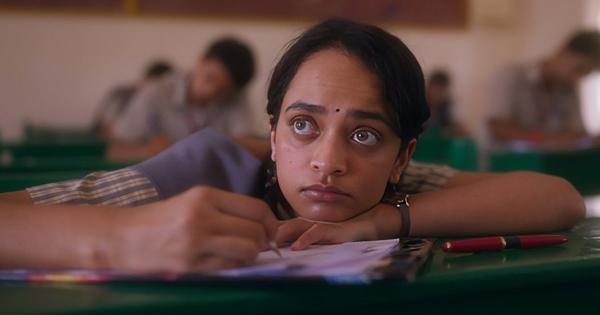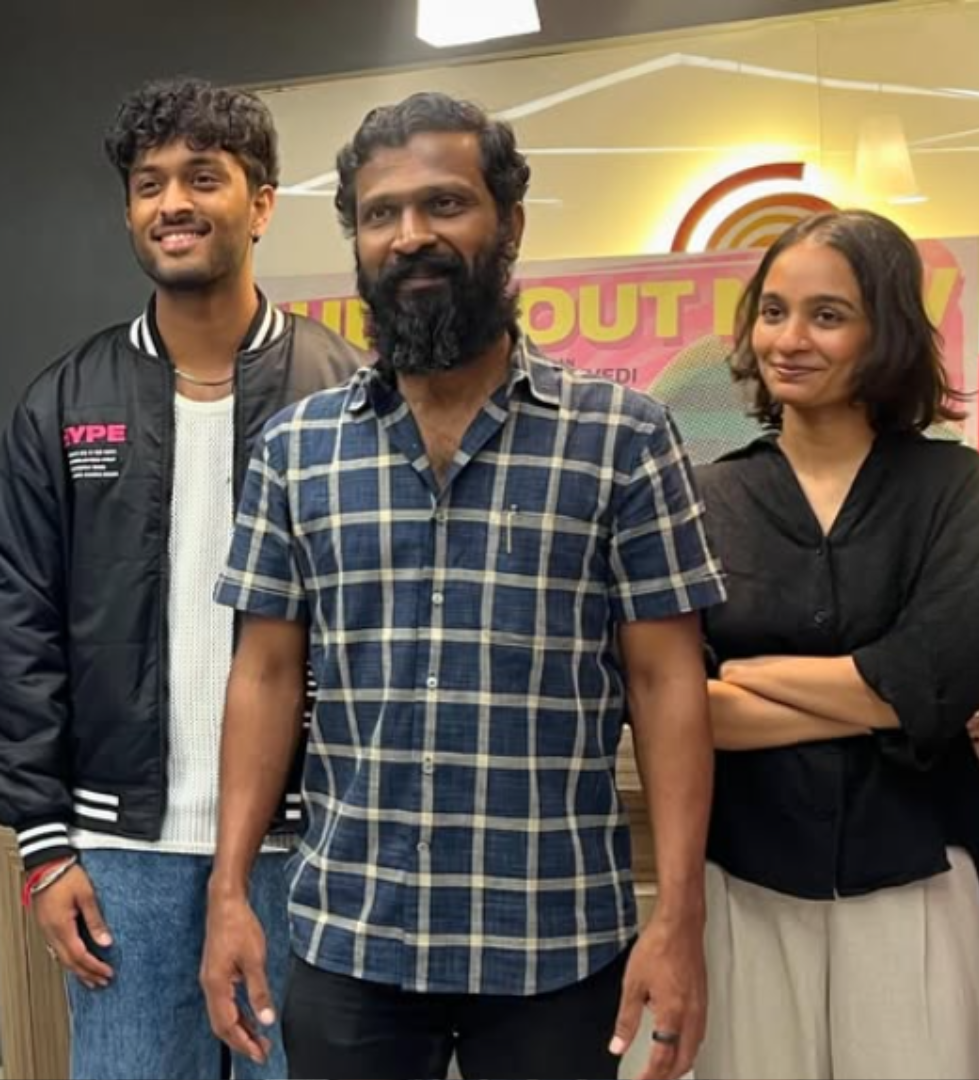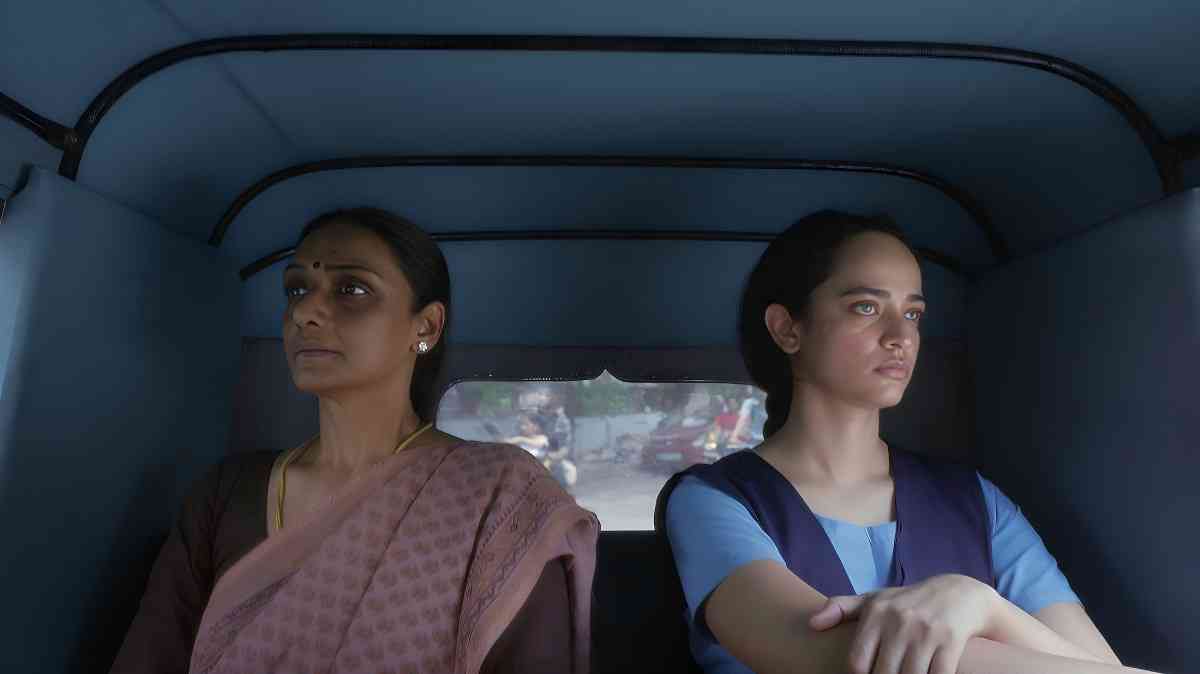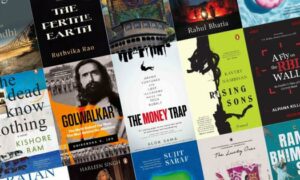
In the poem Advice to Women, Eunice de Souza writes: “Keep cats, if you want to learn to cope with
the otherness of lovers.” This wisdom is learnt the hard way by the messy heroine of Varsha Bharath’s terrific Bad Girl.
The Tamil movie follows Ramya (Anjali Sivaraman) as she attempts to navigate personal problems, boyfriends and a complicated relationship with her mother Sundari (Shanti Priya). The cast includes Hridhu Haroon, Sashank Bommireddipalli, Teejay Arunasalam, Saranya Ravichandran – and cats. Felines were not only woven into Bharath’s screenplay but also contributed to Bad Girl in other ways, the 34-year-old filmmaker told Scroll.
Bad Girl was premiered at the International Film Festival of Rotterdam in February, where it won a NETPAC Award. Bharath’s debut feature, which has music by Amit Trivedi, was released in cinemas in Tamil Nadu on September 5. A Hindi dub, which has been supervised by Anurag Kashyap, came out on Friday.
Varsha Bharath studied electronic media at the MOP Vaishnav College For Women in Chennai. She started working as an assistant director when she was 19. Among the people she assisted was Bad Girl’s producer, the filmmaker Vetri Maaran.
In edited excerpts from an interview, Bharath speaks about why Bad Girl is now available in Hindi, how autobiographical the story actually is, and what the movie is trying to say about womanhood and romance.
Was the decision to dub Bad Girl taken after the Tamil film came out? What’s the difference between the two versions?
It was always on the cards. Anurag sir always felt the film would do well in Hindi. His team has supervised the Hindi dialogue and the dub.
When I first sent the script out, a lot of people asked me why I didn’t make it in Hindi. But I felt that I could root it better in Tamil Nadu.
Nothing has changed, apart from the dialogue being in a different language. One of the main reasons we wanted the film to be out in Hindi is because it opens up access for people who don’t read subtitles. Dubbing also opens up the film to a whole new demographic.
How autobiographical is your screenplay?
This is a very personal film. [It has] all of the feelings you have while at school – the alienation, the loneliness, the feeling that your friends are better and prettier than you. Am I the ugliest person in class, is nobody ever going to love me, am I going to be alone forever?
In adolescence, you feel that if a man doesn’t validate your feelings, you are absolutely worthless. You feel this general sense of anger towards other women because you haven’t learnt to love other women yet. Society teaches us to be competitive towards other women.
Then in your thirties, you find new questions to ask. You unlearn everything you’ve learnt in the past. You have doubts and questions all over again, but for different things. You realise that you got so many things wrong the first time around.
These feelings, these questions are extremely personal to me. The film is not autobiographical, the incidents are fictitious. But I have been that girl who has felt all of these things. I have had friends picking me up constantly. I too have been the person who’s saved my friends.
Bad Girl also has cats. Do you have cats too?
Yes, two of them, they are the love of my life. They are called Karpi and Vellayan – not very creative names. I find that naming characters is the most difficult thing in the creative process.
Was the film always called Bad Girl?
Yes, and Ramya was always called Ramya, because I wanted the most obvious name.
Ramya is a counterpoint to the stock character of the bubbly, airheaded, permanently flustered young woman. Was that consciously done?
When we watch [such characters], we clap anyway because cinema is mass euphoria. But there is a disconnect somewhere. It’s only later that we find the vocabulary to say hey, that’s not true, that’s not my story. So while I didn’t consciously try to break the bubbly girl stereotype, it happened naturally because it’s the opposite of what I believe in.
Ramya too tries to be the bubbly girl, for instance, when she meets her boyfriend Arjun’s mother. She’s chirpy, smiling and trying to be the people pleaser. But when she’s with other people or alone, she’s a grumpy old cat.
We tend to have trope-y characters, but people are not one-dimensional. When we are making a slice-of-life film, we are trying to say that people are everything all at once. They are different things on different days.
Ramya’s relationship with her mother Sundari is a crucial part of her coming-of-age experience. What went into writing that arc?
The mother-daughter relationship is the central romance in this film.
From the beginning, I wanted to tell a story of two women who do not make peace until the end, because that’s probably how my own life is going to go. It’s very unlikely I will have that climatic moment with my mother because we constantly fight. That’s the case with most of my friends and their mothers too – we’re too awkward.
I chose to dwell on how Ramya’s relationship with her mother shapes her and how it’s important for her to make her peace with her mother even if it’s with awkwardness. Just because they had that one moment, does that mean they’re never going to fight again? Absolutely not. It’s not a happy ending but just a promise to try and do better. They are always going to be slightly at odds.
The scene where she hugs her mother and tells her that she loves her was shot 10 days before the release.
So this scene wasn’t there in the version shown at the Rotterdam festival?
No. It was actually Vetri Maaran sir’s idea that I shoot the scene. He told me, you need to complete that arc.
I was very reluctant, stubborn. At one point, he told me, the rest of the film is probably going to age well, but someday you’re going to look back and think, did I caricature the mother’s character? He gave me the example of his own film Polladhavan, in which the boy understands his father.
As Aaron Sorkin has said, you have to plead for every character’s case to go to heaven. A lot of people also felt that Ramya came across as selfish, which is intentional. She is self-obsessed sometimes and narcissistic, which springs from a place of neediness.
Also, we have a lot of internalised misogyny. Women often blame their problems on their mothers. It’s easier than blaming yourself.
Thus that scene between the mother and daughter was actually Vetri sir’s idea. I tried changing the voiceover, but it wasn’t falling into place. Then I asked him, can I shoot for half a day? He said, go ahead, plan the shoot. That’s the kind of producer he is.
We went and shot that scene. A lot of people who have watched the film tell me that it was their favourite scene, and that some of them tried to hug their own moms – some of them unsuccessfully. So Vetri sir’s hindsight rescued me.

What in Anjali Sivaraman convinced you that she was the one to play Ramya?
I spent months and months trying to find Ramya. Someone who was good for the teenage portions wasn’t good for the character in her thirties.
Appearance was a big part of it. Also personality and most importantly, politics – I needed someone who would not judge Ramya, who could be a little flawed, who was comfortable with ambiguity.
When I first saw a picture of Anjali on Instagram, I found her to be very striking. I was also drawn to the fact that she’s a cat mother. She has two beautiful cats. Her relationship with her cats convinced me that she would add another layer to the story.
Her Instagram profile mostly has her modelling stuff. She was clearly a fantastic actor, because I saw her in the series Class. She has amazing screen presence, but I was also a little sceptical because she is beautiful, while Ramya is somebody who feels ugly and left out, a loser, a loner. But then Anjali dropped into the office without the airport look. She was so gawky, a bit of a cozy cat herself.
She has that personality that made me feel like she understands the politics of beauty, how one woman’s beauty is oppressive to another woman. I didn’t want people to look up to Ramya but look at her at eye level. They should feel, yes, this is me. It shouldn’t be aspirational at all. She was in agreement with all of these things.
I think she was meant to play this role. I cannot see this film with anyone else in it but her and Shanti Priya ma’am.
What made you pick Shanti Priya to play Ramya’s long-suffering mother?
Like with Anjali, I was constantly asking everybody in my circle to send me profiles of women to play Sundari. I even spent days standing outside the Kalakshetra dance school. When I saw Shanti Priya’s Instagram profile, and then met her in person, I knew I had my amma.
The only thing I had to convince her about was not to wear make-up. When I convinced her that this would be good for her, for the character, for women, she was game.

Casting the male actors in a movie like this must have been a challenge, right?
Hridhu Haroon had already know done some fantastic work. He had been in Payal Kapadia’s All We Imagine as Light. He was used to working with minimum resources and with women.
It takes a certain generosity for men like Hridhu and Teejay Arunasalam to play roles like these because they are being approached to play lead characters in big-budget films. But they were such sports. They understood this was the story of a girl and that they were supporting characters.
Sashank Bommireddipalli, who played Arjun, had a lot of scenes of physical intimacy with Ramya. It was important to cast a naturally nice guy so that Anjali felt safe being that person with him.
Sashank is an absolute feminist who gave Anjali the safe space to be vulnerable. He’s not a professional actor but a musician, so it was his first time being in front of the camera.
He’s such a softie that he would forget that he was supposed to be the meanie. Right before I said action, Anjali had to whisper to him, remember not to be nice to me.
What was the response to the film’s release in Tamil Nadu?
The night before the release, my producer and well-wishers told me, don’t dwell on the numbers, just enjoy the reactions and learn from the conversations. I did obsessively look at the footfalls in theatres on BookMyShow and other ticketing apps. So while I don’t have the numbers with me, I was quite disenchanted – I am not going to lie about it.
I tried my best to make a very engaging film, a visual spectacle. The film has humour, it’s racy and doesn’t bore people, the music is fantastic. I felt that it should have done better, but then perhaps I’m just being greedy and ambitious.
I also felt sad about the controversial stuff that was said about the film. It had nothing to do with its actual quality. It was natural and soft for me to tell the story. It’s me trying to get out of my own inhibitions, trying to say, we’re not bad people but humans trying to get by. So when people attach word like “rebellious” or whatever to the film, I want to say, the film is actually very soft.
One controversy was about Ramya’s upper caste background. Another review said that the film wasn’t actually a work of radical feminism.
I know about this one review that said this. I encourage the critic to share her opinion because there might come a time when I agree with her. Right now, I’m a little too consumed and obsessed with my baby to agree with her.
I did my best within a milieu that is familiar to me. Although I definitely disagree with her at this point, I do feel that people should not be telling her not to share her criticism. That’s the point of these conversations we are having – everybody doesn’t have to like the film.
I guess I would like to do better. I think that is also the point of making this film – we’re trying to get over ourselves.
Also read:
‘Bad Girl’ review: A terrific journey through a woman’s heart and soul
📰 Crime Today News is proudly sponsored by DRYFRUIT & CO – A Brand by eFabby Global LLC
Design & Developed by Yes Mom Hosting






